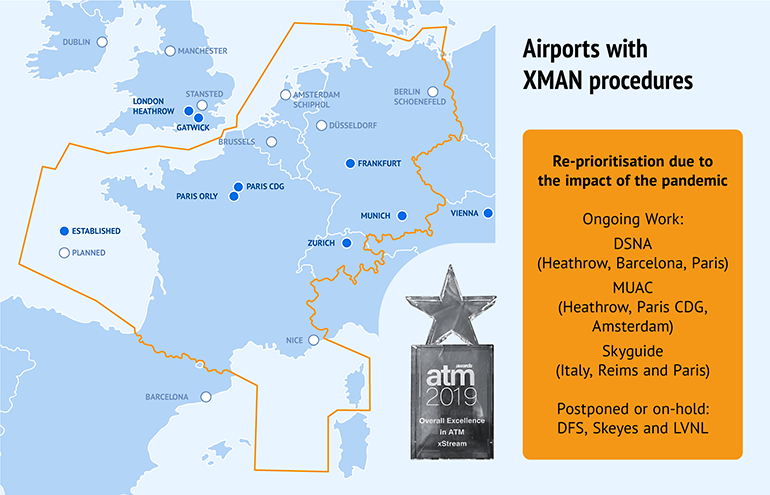Extended Arrival Management (XMAN)
For several decades the arrival sequence at major airports is pre-defined by Arrival Management Tools which calculate optimised sequences using actual traffic data and advise the approach controller in charge of inbound traffic. These tools are very helpful, but they have one weakness – their range is limited by the size of the airspace under the centre’s control. In practice this means that the range might be as short as 50 or 60 kilometers.

In response, FABEC launched a common project called Extended Arrival Management (XMAN) at its inception to extend arrival sequencing to upper sectors and neighbouring area control centers up to a range of 450 kilometers. This enables an air traffic controller in the upper area control centre to change the speed of an aircraft a long way from its destination to generate an optimised landing sequence and reduce congestion around the airport.

What sounds like a simple extension to the range is a highly complex undertaking. It requires detailed agreements between control centres in different countries and areas of responsibility (lower and upper airspace), and includes overlapping catchment areas of various FABEC airports plus the adjacent London area control centre. The amount of data processed increases exponentially, and is managed using big data solutions.









